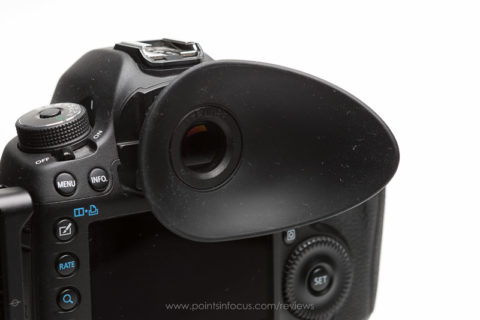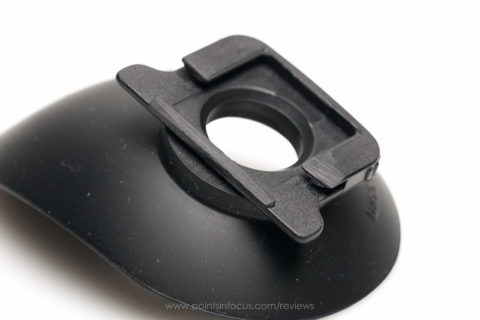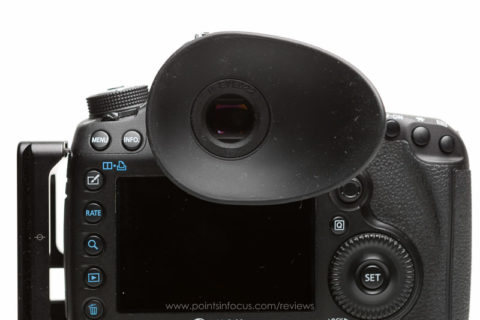HoodmanUSA HoodEYE for Glasses (Canon Eg Version) Review
Every now and again, I end up trying to review a product that comes in a lot of forms, but is otherwise the same thing. In this case I’m looking at Hoodman’s Hoodeye for people with Glasses, and specifically the version for Canon camera’s that use the Eg eyecups—so basically all 1D, 1Ds, the EOS-1D X, EOS-1D C, 7D, and 5D mark III cameras.
I first ran across the HoodEYE some time back when I was looking at Hoodman’s HoodLoop as a viewfinder for shooting video. It wasn’t until I repeatedly saw Matt Granger (That Nikon Camera Guy) using them in a number of his videos that I thought seriously about giving them a try.
The idea of a big wide eyecup is to block out stray light from around the sides of your eyes. This does two things; first, it cuts down on glare. More importantly by cutting down on stray light, it makes the viewfinder appear brighter since your eye can adapt to it without all the stray light.
Hoodman USA makes two variants of their HoodEYE eyecups, one for those who wear eyeglasses, and one for those who don’t. The difference ultimately comes down to the size of the flare that goes to wrap around your head. The normal version has a smaller flare since it will fit more snugly against your face without the interference of eyeglasses. The version for eyeglasses, obviously, has a larger flare that’s designed to be able to wrap around the edge of your glasses.

Let me start with the positive side. The HoodEYE blocks a lot of stray light even with my relatively wide rectangular glasses. In a simple comparative test under a bright glary light, the viewfinder appeared considerably brighter and with better contrast when using the HoodEye than when not. This is entirely due to the shading effects and the reduction of reflections from my eyeglass lenses.
That said, at least with my relatively wide rectangular profile eyeglasses, the HoodEye didn’t completely block all light. I could see an obvious gap along the outer edge (right in my case since I’m right eyed), and there clearly was leakage from the top since I could see reflections from the light I was under in my lenses.
For me the question of whether or not the HoodEYE aids with respect to shielding the viewfinder is a resounding yes. It’s much easier to see what’s going on in the camera in bright and glary situations.
The second consideration is the viewfinder. There are no optics in the HoodEYE. It’s just a rubber eyecup. However, I did find that the HoodEYE does push your face away from the camera, which in turn means that the viewfinder is slightly more obscured. I found the differences in positioning most obviously noticeable in how much my nose wasn’t mashed against the back of the camera. With the HoodEYE only the tip of my nose touched the screen on my 5D mark III, without it, I could really get much closer with much more of my nose mushed up against the back of the camera.
That said, because the HoodEYE pushed my eye away from the camera, I did have to make a conscious decision as to whether I wanted to be able to these the whole image in the viewfinder or the information along the bottom. If I position my eye so I can see the whole frame, the display is obscured by the viewfinder frame. Likewise, if I shift position to be able to see the LCD, I can’t see a similar amount along the top of the frame.
The positional side of things creates an interesting choice for me balancing the improved viewfinder clarity in bright environments with the need to more radically adjust my eye-point to see either the whole frame or the status bar. I can certainly see situations where I’ll want the improved clarity over the better viewfinder visibility, like say when shooting on a beach or in the snow. On the other hand, when shooting in a studio or anywhere indoors I definitely will prefer the standard Canon eyecup.
The biggest problem with the HoodEYE is the mounting arrangement. The extent of this will vary depending on the specific model you need for your camera. I purchased a HEYEC22G, which is the correct mount for the 7D, 5D mark III, and 1D and 1Ds cameras since the Mark III including the EOS-1D X and EOS-1D C. The following comments also likely apply to some significant degree to those buying eyecups for the 6D, 5D, 5D mark II, and all square mount Nikon bodies.

Canon’s EG eyecups have a locking mechanism that consists of 2 spring-loaded arms that lock under the rails that guide the eyecup on. When in position, it’s quite difficult to accidentally slip the Canon eyecup off. However, when you want to release it, you merely need to squeeze the two sides and it slides off.
Hoodman for whatever reason elected not to attempt to duplicate this design; instead, they elected to make the locking system a single raised plastic tab that butts against that locks against the bottom of the viewfinder as a whole. Their design is certainly secure. In fact, that’s the problem. It’s far too difficult to remove the HoodEYE with locking ledge as it comes from the factory. This ledge is so much of a problem, that after getting my HoodEYE off my camera the first time, I immediately set to filing it down to something considerably less pronounced.
Now why would you want to remove your HoodEYE? Apart from the previously mentioned problems with the visibility of things in the viewfinder, the biggest problem is simply that the HoodEYE covers a significant amount of the rear LCD. When shooting stills, I didn’t find this to be that big of a deal. At worst, I just need to tip the camera a little more to read the top of the LCD. However, for shooting video the HoodEYE really does get in the way.

In the end, I’m not sure the HoodEYE is worth it. On one hand, I do like the improved clarity in the viewfinder thanks to the shading. On the other hand, I often have a wide brimmed hat on when I’m working in the kinds of environments where the HoodEYE really helps, and that alone blocks a tremendous amount of glare. Moreover, for me at least, the mount and the minor reduction in viewfinder visibility, obstruction of the LCD, and the mount design really opens the question up significantly. As it stands, I’m not convinced either way.
See Hoodman’s Compatibility Chart for the specific model for your camear.
Comments
There are no comments on this article yet. Why don't you start the discussion?